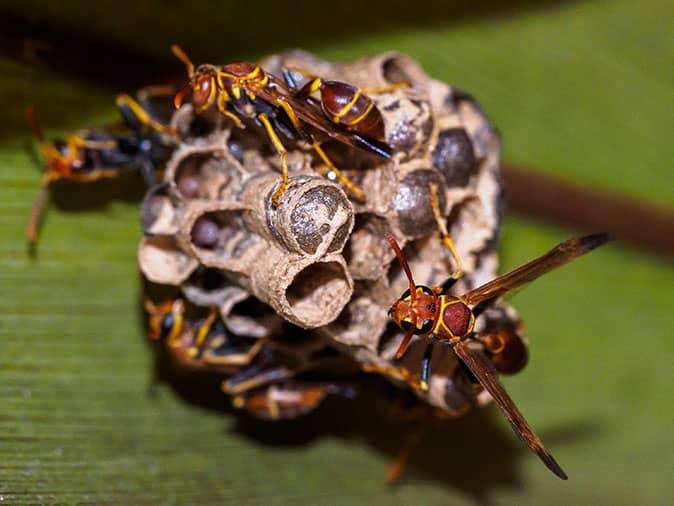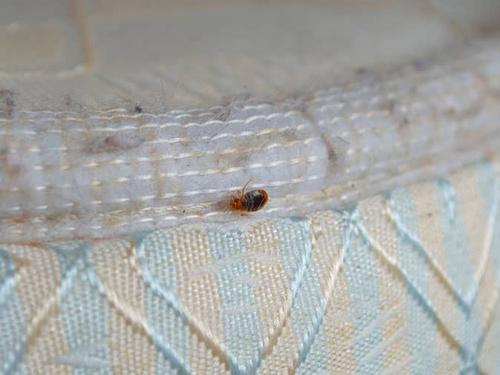Types Of Wasps In Colorado
There is a wide variety of stinging insects in Colorado. And, of all the insects that sting, wasps are the worst. But not all wasps are created equal. stinging insects in Colorado. And, of all the insects that sting, wasps are the worst. But not all wasps are created equal.

Solitary Wasps
These insects do not produce a colony and are not aggressive. Many of these wasps will only sting if they are handled, or when they accidentally come in contact with the skin. So you'll want to look where you're sitting when you have these wasps around.
While these wasps construct some kind of nest, they do not do it the same way social wasps do. They will most often make something small and bring dead insects back to give as food for their developing young.
Social Wasp Species
Western Yellow Jacket
The Western yellow jacket (Vespula pensylvanica) accounts for over 90% of "bee stings" in Colorado. This is because they will swarm around areas where there is open trash, or exposed meats and sweets. All yellowjackets in the state are aggressive, but the Western yellow jacket is the most aggressive. And, in fall, these fierce insects are more of a threat because many nests will have up to 200 individual wasps in them. These nests can most often be found inside ground holes that have only a small opening where the yellow jackets enter and exit. You will recognize this insect by its bold black and yellow coloring. Some people mistake them for bees, but they do not have the fur that bees have. They are hard and glossy.
Western Paper Wasp
The Western paper wasp (Mischocyttarus flavitarsus) and the European paper wasp (Polistes dominula) are both plentiful in the state. These wasps build open cell nests that do not have a papery casing, but they create these nests in different areas. The Western paper wasp prefers to build nests under overhangs. The European paper wasp will develop nests inside small cavities on buildings, inside pipes and gutters, and in manmade items that have cavities, like outdoor grills. These wasps can be mistaken for yellow jackets because of their yellow and black coloring.
Baldfaced Hornet
The baldfaced hornet (Dolichovespula maculata) is not a hornet at all. It is a wasp. These wasps build large nests under overhangs, on eaves, in trees, and inside bushes, that are hard to miss. Their temperament and scavenging habits are similar to yellow jackets, and this brings them near humans. They can be distinguished by their mostly black bodies and their mostly pale faces.
Solitary Wasp Species
Hunting Wasp
Hunting wasps (Sphecidae spp.) have different nesting habits, depending on the species. Some hunting wasps will excavate nests in the ground. Some will create chambers in the pith of plants. Some will use pre-existing holes to develop a nest in. And, some create a structure made from mud.
Mud Dauber
Mud dauber (Sceliphron caementarium) is the most common hunting wasp in the state. These solitary wasps are black and yellow with a thread-like waist, and build their nests out of mud, as their name suggests. They are not aggressive and don't defend their nest. So, while they may look scary, they are anything but scary.
Spider Wasp
Spider wasps (Pompilidae spp.) are bluish-black wasps with tan wings. Their name aptly describes what they do. These wasps hunt spiders, paralyze them, and take them back to their nest to provide food for developing young. These wasps may develop their nest in mud structure abandoned by mud daubers or in ground holes. While this wasp isn't likely to sting you unless you handle it, it has a very painful sting and should be avoided.
Velvet Ant
Velvet ants are an unusual wasp that is common to prairie areas. The females of this species are wingless and extremely active. If they come in contact with humans they can cause a painful sting. These wasps can be distinguished by their furry exterior.
Stinging Insect Control From EnviroPest
If you see stinging insects on your Colorado property, contact EnviroPest for safe and complete removal.

Testimonials
GETTING STARTED IS AS EASY AS 1-2-3
REQUEST FREE ESTIMATE
Pest Solutions For Homes & Businesses
We understand that pest problems can be unsettling and frustrating, but the solution shouldn't be. For over 55 years, we've been helping folks right here in Colorado take care of ants, spiders, mice, mosquitoes, wasps, bed bugs, bats and most other creepy crawly things. We'll get there fast to solve the issue quickly and affordably - Guaranteed.



